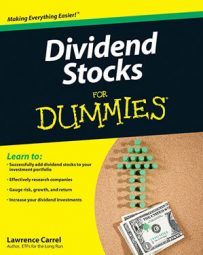Mutual funds abound, and many of them focus more on capital appreciation than on dividends and income, so you have to be selective. For information that’s more focused on mutual funds, check out the following resources:
Morningstar: This company’s main focus is the evaluation and rating of mutual funds. The Morningstar Web site (www.morningstar.com) offers tons of information about performance, fees, and management. You can often find analyst reports on specific funds.
Lipper: Lipper features an extensive rating system for mutual funds called the Lipper Leaders. It classifies funds in five areas: total return, consistent return, preservation of capital, tax efficiency, and expenses. Funds that do well in the majority of categories are called Lipper Leaders. Go to www.lipperleaders.com to get to the Lipper Research Center.
Charles Schwab: In addition to selling its own mutual funds, Schwab runs what it calls a mutual fund supermarket — a platform that allows you to buy and sell thousands of funds with no loads or transaction fees. It also offers load funds. In addition, it contains research reports and screens to help you make more informed decisions.
For additional information about a fund, visit the fund company’s Web site, where you can usually find gobs of information on the funds, as well as an online prospectus and application forms.
Spotting dividend-focused mutual funds
When shopping for dividend-focused mutual funds, don’t let the names of the funds confuse you. Some mutual funds that advertise themselves as dividend funds hold plenty of growth stocks, and many mutual funds that do deal exclusively in dividend stocks don’t even have the word dividend in their name. What’s a dividend investor to do?
The first step is to screen for dividend funds. You can do so using any of the online tools presented in the preceding section. For example, the Lipper Leaders Web site enables you to screen for Equity Income Funds.
Another strategy is to look for funds that have any of the following words in their names: total return, income, or value. Some income funds or blend funds can also hold bonds, generating income from both stocks and bonds, but searching for income or value funds should screen out most of the funds that have nothing to do with dividends.
Understanding a fund’s share price
Shares of mutual funds are sold and priced differently than shares of stock. Shares of stock trade on the stock exchange between investors. The market drives the price, which can rise or fall throughout the day according to investor demand. On the other hand, you buy mutual fund shares directly from the fund.
To determine the mutual fund’s share price the fund company first calculates its net asset value (NAV). When the market closes, the fund obtains the end-of-day price for every equity held in the portfolio and multiplies each separate value by the number of shares the fund holds of that particular equity to determine its value. It then adds up the values of all equities in the portfolio and subtracts any liabilities to determine the NAV:
NAV = Total Value of All Equities – Liabilities
Although you must place an order to buy or sell shares of a mutual fund when the stock market is open, you don’t know what price you will pay. That’s because the fund needs the closing price of every equity before it can calculate the NAV, and it can’t get that until after the market’s 4 p.m. close.

